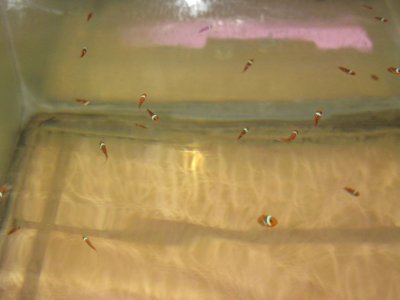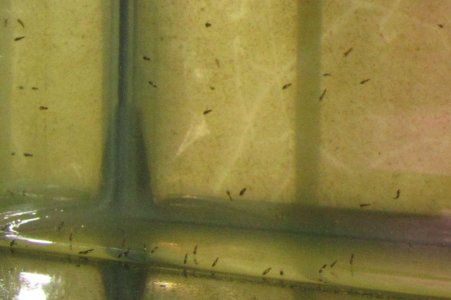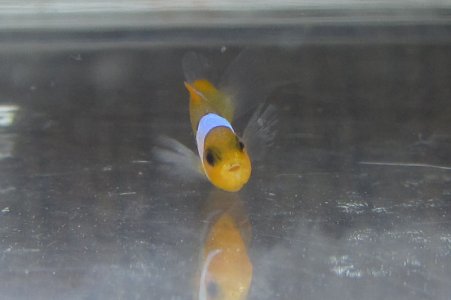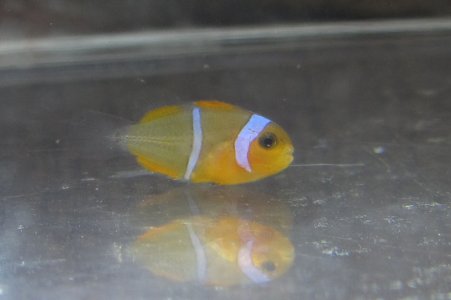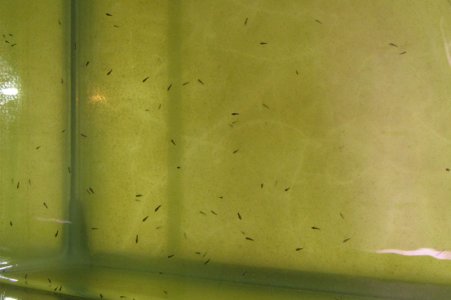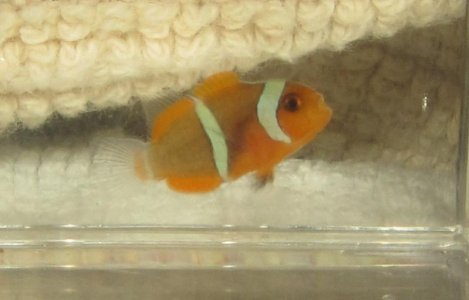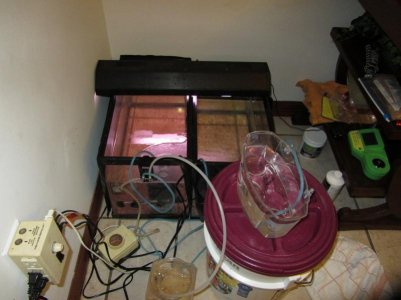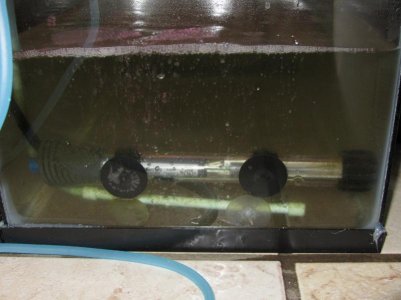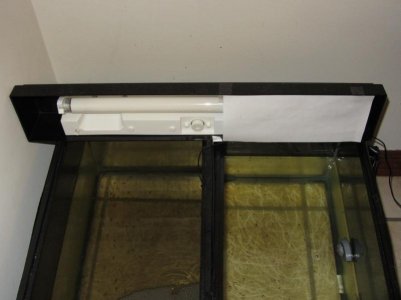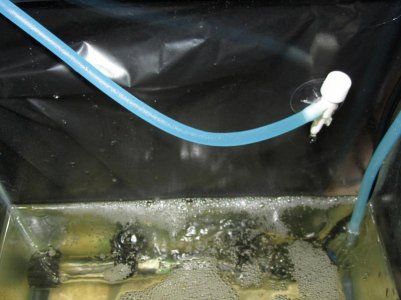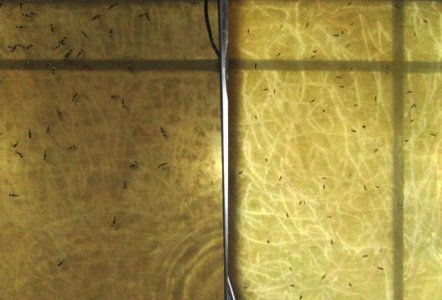Some notes on my fry care:
24 hours of light after hatch, thereafter about 9 hours lights out 15 hours with light.
I use a flourescent 15 watt T8. I use three sheets of paper to diffuse the light for the first 2 days. Then I remove 1 layer for the next 4 days, and I leave 1 layer until they are post meta.
Water changes:
1 - 7 dph, the 10 gallon tank is about 1/4 filled. I remove about .5 gallons to syphon out gunk on the bottom and I slow drip the replacement about 2 drops per second using broodstock water that I collected the night of the hatch. About every 2 days or so I slow drip about 1/4 gallon RO/DI water (1 drop per second) to replace evaporated water.
during meta, I syphon out gunk and replace with broodstock water from the main tank and slow drip about 2 drops per second. I usually only do like 1/3 of a gallon.
Post meta, I increase water volume to 5 gallons using broodstock water, then I do daily 1 gallon water changes as I remove the gunk from the bottom. Again I only use broodstock water. Past meta I no longer drip the water, I just dump it in slowly since both tanks are at the same temperature. I've been doing this for the last 3 days and the clowns seem happy and not stressed, they in fact attack my hands when I try to clean the tank with the turkey baster.
Feeding:
1 - 10 dph rots, although my last batch was at 5 dph when my rot culture crashed, survival rate on this batch is TBD real soon!
7 - 12 dph or after meta, I do sume NHBS and oto B1.
past 12dph I'm now feeding Oto b1 and golden pearls sized 350-500 microns (what they call NHBS replacement). I occassionaly throw in some NHBS for a treat, maybe a pinch in the evenings.
Water control
I used Amquel + to maintain ammonia uneder check. I have a seachem ammonia badge as an indicator. I also have cloramx, but Amquel + is supposed to neutralize nitrites as well, so I'm using that for now. I'm not even bothering with PH since I'm only using broodstock water which is pretty stable at around 8.2. I figure some PH fluctuation is going on as the Amquel + tends to lower PH a bit, but it hasn't made a difference as far as high mortality.
Whenever I remove water from the broodstock tank for use I replenish it with fresh seawater, I use RO/DI + instant ocean brand.
A couple of thing I highly recommend.
1. Get a refractometer and check salinity daily to keep the larval tanks within .01 specific gravity from the broodstock tank in case of "emergencies."
2. Get some the seachem ammonia badge.
3. Get some cloramx or amquel + to keep ammonia under check. I never let it get past the .05 ppm reading.
4. Have dual roti cultures going at the same time (I learned that the hard way). Or at least keep about 1 liter of dense culture in green water in your fridge if you need to restart culture. (replace weekly as necessary).
5. Use Decap brine shrimp eggs.

